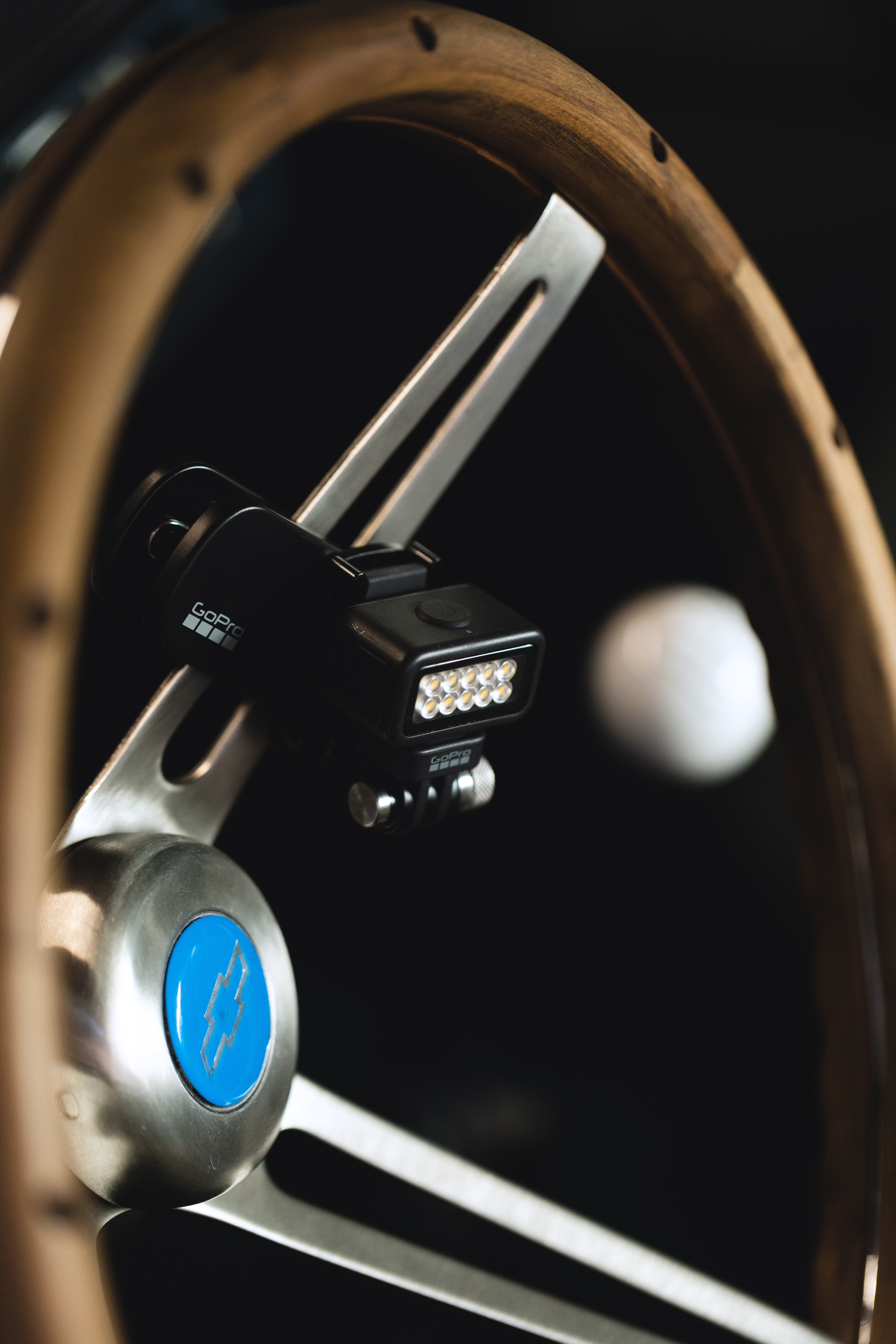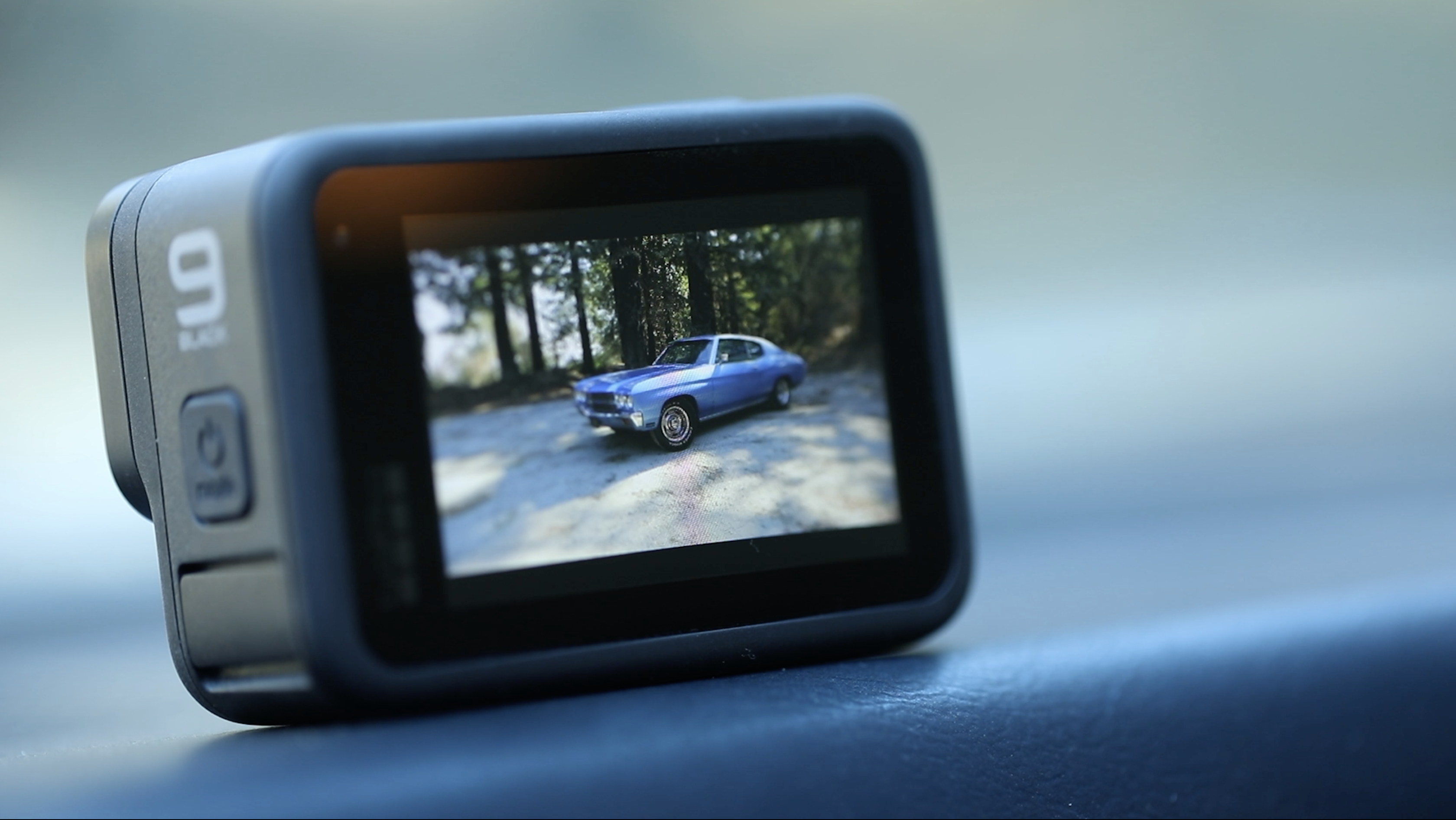There are plenty of reviews out there for the Hero 9 already, so I wanted to do something a little different. I decided to put GoPro’s latest to the test while hugging turns in my 1970 Chevelle.
I recently swapped the automatic transmission in it for a Tremec Magnum 6-speed manual in order to do something I’ve never done before: rev-match my downshifts. In other words, I wanted a smooth ride. And what better way to monitor my progress than record it with the Hero 9?
The camera features a front-facing screen, removable lens cap, webcam and streaming capabilities, Hypersmooth 3.0, and Hindsight with up to 30 seconds of pre-recording. GoPro threw in the Zeus Mini, and I’m glad they did.
The rechargeable LED light has a 6-hour total runtime at level one brightness. There are four levels in all, at a max of 2000 lumens. It’s waterproof up to 33 feet and has a 360 rotating clip that’s also magnetic. There’s also a strobe mode for emergency signaling or partying. As a video producer I can always use different types of light sources.

Mounting the Zeus Mini was quick and simple thanks to the clip. It lit my pedals well. I set the brightness on level four to try and match the light coming in from the windows. I have to say I’m very impressed with the utility of the light. Not only can it mount onto the cold shoe of a media mod, you can clip it on your hat for camping, or light up a section under the hood that’s tucked away from light. It’s handy.
I tried mounting the Hero 9 a couple of places to capture the road, as well as my shifting in the same frame – one with a head mount and the other on my chest. Neither one could capture both really well, but the chest mount was definitely better than on my head. I also mounted DJI’s competitor, the Osmo Action, as a b-cam to cut between for comparison.
I shot both cameras with stock settings. Of the two, the Hero 9 generally had less noise in the shadows, more vibrant colors and a high-contrast image quality compared to the Osmo. I like to shoot most of my work flat so I have the option to create the look that I want instead of having it baked in, but in this case I really didn’t mind having that stock GoPro look.
Seeing your ride blast down the road in 5k is awesome and hearing your exhaust note roaring by can be just as good. The sound quality is also much better on the Hero 9 than the the Osmo, especially at lower frequencies. DJI’s camera seemed to have a high pass filter or additional wind filtering baked in even when the optional wind noise reduction was already turned off. The Hero 9 also has some wind noise filtering that was noticeable but it didn’t seem as intrusive.
One tjomg I didn’t like about the Hero 9 is how both screens are simultaneously on. I know a lot of folks love this feature, and I see why it can be useful, but I just think you should be able to turn them off and on independently. Maybe a double tap on the mode button or something, because, you know, battery life.
The battery is improved from the Hero 8, but when recording side-by-side with the Osmo for continuous recording, the Hero 9 depleted when the Osmo was still around 50%.

Another critique: the hypersmooth actually worked too well. A side-by-side from the rear shows the Hero 9 drift from left or right in the turns to keep things smooth, whereas the Osmo drifted some but managed to keep most of the dash in frame.
A common nice-to-have feature on either action cam would be a front touch screen. But adding that functionality would likely mean increasing the overall size even more.
Watching myself rev matching in 5k is definitely helpful and it’s only a matter of time before I get better. The Hero 9 is a significant improvement on previous generations. If you own a Hero 8 and don’t have a need for a front facing screen, 5k, or a removable lens then you probably don’t need to upgrade. For me, the Hero 9 isn’t the silver bullet of action cams but is a welcome addition to my collection.
You can pick up the Hero 9 Black for $399.
from TechCrunch https://ift.tt/3kofn2l

No comments:
Post a Comment